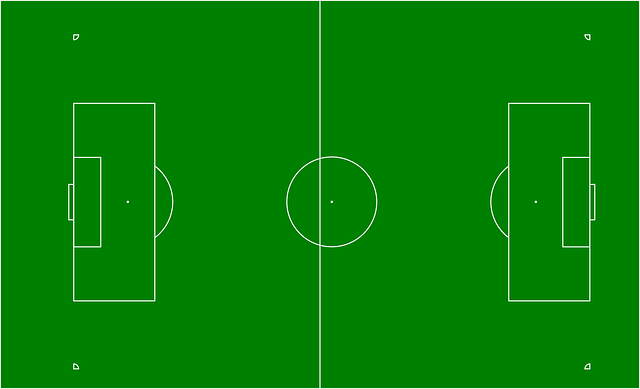Exploring the Fascinating History of American Soccer!
Soccer, also known as football, has a long and varied history in the United States. While the sport has never reached the same level of popularity as American football, baseball, or basketball, soccer has nonetheless attracted a dedicated following in the country.
In this article, we will explore the history of soccer in America, from its introduction in the 19th century to the present day.
Introduction
Soccer, as we know it today, has its roots in England. The modern game was developed in the mid-19th century, and quickly spread to other countries in Europe and beyond. Soccer arrived in the United States around the same time, with early games being played in schools and clubs in the late 1800s. However, the sport struggled to gain a foothold in America, where other sports such as baseball and American football were more popular.
Early Days (Late 1800s to Early 1900s)
Soccer’s early days in America were characterized by a lack of organization and infrastructure. Games were often played in ad-hoc leagues or among amateur clubs, and there was no national governing body to oversee the sport. Nonetheless, soccer slowly began to gain popularity, especially among immigrant communities who had brought the sport with them from Europe.
One of the earliest organized soccer competitions in the United States was the American Cup, which was first contested in 1885. The tournament attracted teams from across the country, and helped to establish soccer as a legitimate sport in America. The tournament continued for over 30 years, and was eventually replaced by the National Challenge Cup (now known as the Lamar Hunt U.S. Open Cup), which is still held today.
In the early 20th century, soccer in America continued to develop, with more organized leagues and clubs popping up across the country. In 1913, the United States Football Association (USFA) was founded to oversee the sport at the national level. The USFA was later renamed the United States Soccer Federation (USSF), and remains the governing body for soccer in America to this day.
Mid-20th Century (1940s to 1960s)
Soccer’s popularity in America ebbed and flowed in the mid-20th century. The sport experienced a surge in popularity during World War II, when soldiers stationed overseas played the game and brought it back to the United States. In the post-war years, soccer continued to grow, with the establishment of professional leagues and the formation of the North American Soccer League (NASL) in 1968.
The NASL was a major milestone for soccer in America, as it was the first attempt to establish a professional soccer league in the country. The league attracted some big-name players, including Pelé, who played for the New York Cosmos in the 1970s. However, the NASL struggled to attract a large fanbase, and the league eventually folded in 1985.
Modern Era (1990s to Present)
Soccer in America underwent a resurgence in the 1990s, with the establishment of Major League Soccer (MLS) in 1993. The league initially struggled to gain traction, but eventually found success thanks to the popularity of the 1994 World Cup, which was held in the United States. The MLS has since grown to become a major professional league, with 27 teams across the United States and Canada.
In addition to the growth of the MLS, soccer in America has seen increased participation at the youth and amateur levels. The United States has also experienced success on the international stage, with the men’s national team qualifying for the World Cup in every tournament from 1990 to 2014. The women’s national team has been even more successful, winning four World Cup titles and four Olympic gold medals.
soccer in America, the sport still faces challenges and struggles to achieve the same level of popularity as other sports in the country. One of the biggest challenges is competition from other sports, particularly American football, which has a large and devoted fanbase. Soccer also faces challenges in terms of infrastructure and funding, with many communities lacking access to quality facilities and coaching.
American Soccer Challenges
Another challenge that soccer faces in America is the perception that it is a “foreign” sport, and not truly American. This perception has been fueled by the fact that soccer is more popular in other countries, particularly in Europe and South America. However, this perception is slowly changing, as more and more Americans embrace soccer as a legitimate and exciting sport in its own right.
In recent years, soccer in America has also been impacted by social and political issues, particularly around issues of diversity and inclusion. The sport has been criticized for not doing enough to promote diversity and for being slow to address issues of racism and discrimination. However, soccer has also been a platform for social change and activism, with players and teams using their platform to advocate for social justice and equality.
Despite these challenges, soccer in America has come a long way since its early days in the late 19th century. The sport has established itself as a legitimate and popular pastime, with millions of Americans playing and watching soccer every year. While it may never achieve the same level of popularity as American football or baseball, soccer has carved out its own niche in American sports culture, and continues to grow and evolve with each passing year.
- American Sports
- “From Pastime to Passion: Tracing the Fascinating History of American Golf and its Enduring Legacy
- “From the Court to the Diamond: The Most Iconic American Athletes”
- American Baseball
- American Football
- American Ice Hockey
- Exploring the Fascinating History of American Soccer!
- MMA Mixed Martial Arts
- Step into the Ring and Discover the Fascinating Story of American Boxing
- The History of American Tennis: From Humble Beginnings to Global Phenomenon
